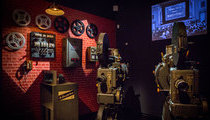Where does cinema come from?
Lecture by Walter Murch
3 décembre 2016
A lecture about the historic transition from analog to digital cinema, and how both can come to the rescue of the early artifacts of a budding art form which at the time certainly didn't regard itself as art but rather an invention, an oddity, a means of entertainment. But cinema's origins may be traced back to long before its invention, as though humanity had always been hoping for it. So, where does cinema come from? How did it manage to catch on so quickly after going on the market? Should its technical advent mark its birthdate — or was it borne out of the other arts, themselves an expression of the great human reverie.
Vidéo en anglais sans sous-titres.
Walter Murch est l'un des noms les plus célèbres du montage son et cinématographique. Il a travaillé comme monteur son et cinématographique sur de nombreux films à succès, dont American Graffiti (1973), Le Parrain 2 (1974), Conversation secrète (1974), Julia (1977), Apocalypse Now (1979), pour lequel il a remporté un Oscar, Le Patient anglais (1996), qui lui a valu un double Oscar pour le montage son et cinématographique, Le Talentueux M. Ripley (1999), et Cold Mountain (2003). Murch a également réalisé Retour à Oz (1985). Il est l'auteur de plusieurs ouvrages dont En un clin d'œil (1995), ainsi que Suddenly Something Clicked: The Languages of Film Editing and Sound Design (Faber & Faber, 2025).
